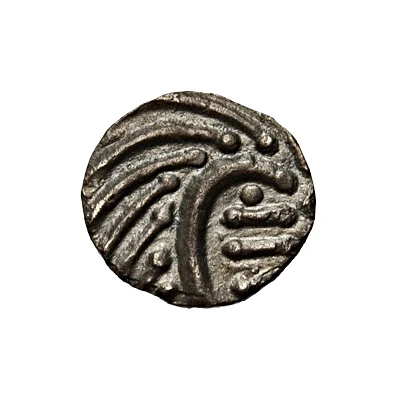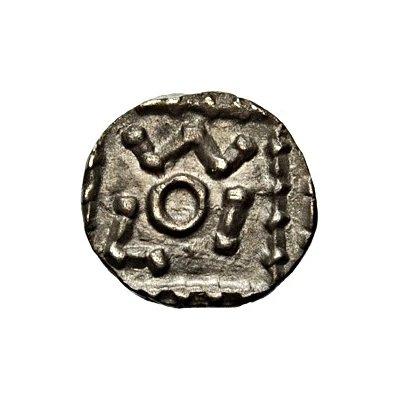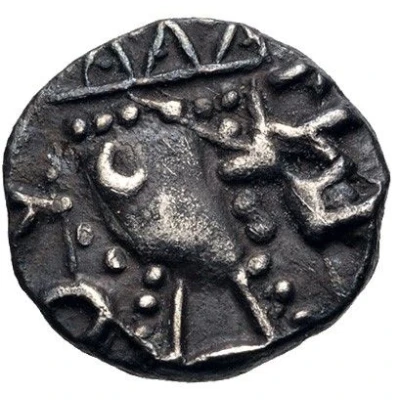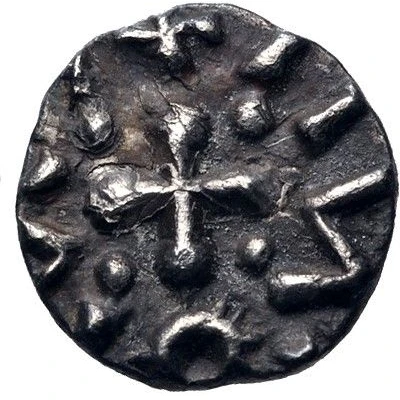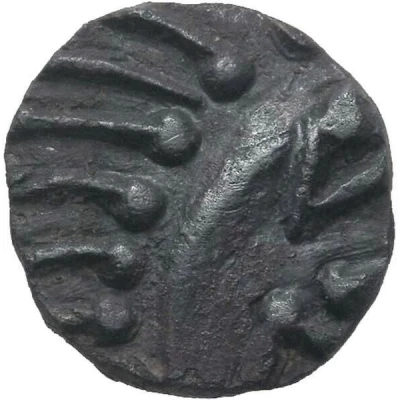
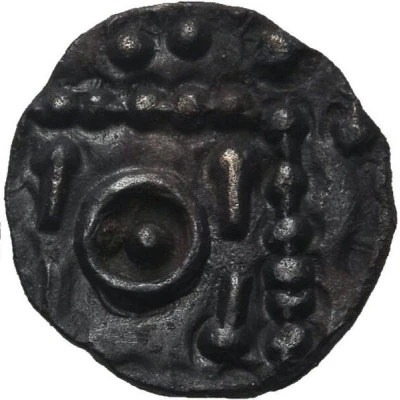

© Schulman auction house
Sceat Porcupine type - Series E, Var. G
| Silver | 1.15 g | - |
| Issuer | Frisia (Kingdoms of British Isles and Frisia) |
|---|---|
| Type | Standard circulation coin |
| Years | 680-710 |
| Value | 1 Sceat |
| Composition | Silver |
| Weight | 1.15 g |
| Shape | Round (irregular) |
| Technique | Hammered |
| Demonetized | Yes |
| Updated | 2024-10-09 |
| Numista | N#344130 |
|---|---|
| Rarity index | 94% |
Reverse
Dotted square containing circle with point in center, and rods.
Comment
Series E, var. G1Continental sceatta types:
a. continental rune type: based on find locations these types are probably produced in the lower Rhine area
b. porcupine or standard type: possible production areas are England and Frisia, but possibly Northern Germania and France as well
c. Herstal type: production of this type was probably near the Belgian town of Herstal
d. Maastricht type: the type and style resemble the Merovingian coins from Auxerre. More likely to be produced in Belgium or Northern France, than in Maastricht (NL).
e. Wodan/monster type: until recently considered as Frisian heritage, nowadays also possibly Danish.
All types have a lot of variations and are not strictly distinguishable.
Interesting fact
One interesting fact about the Standard circulation coin Sceat (Porcupine type) - Series E, Var. G (680-710) from Frisia (Kingdoms of British Isles and Frisia) made of Silver weighing 1.15 g is that it features a unique design on its reverse side. The coin features a depiction of a porcupine, which is not commonly seen on coins from this time period. The porcupine was likely chosen as a symbol of protection and defense, as it is known for its sharp quills that can deter predators. This design element sets the coin apart from other coins of the time and makes it a fascinating piece of numismatic history.
